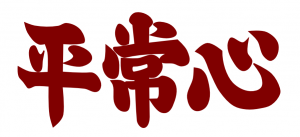This summary is for the afternoon session in Amstelveen.
As is customary this season, the training started with a shinai check and a warm up that included stretching and suburi. More specifically jougeburi, shomen and a shomen exercise where hiraki-ashi is also utilized.
After the warm-up the group was split into three groups. The beginners, those who are going to participate in the Düsseldorf taikai and would do shiai training, and the rest who are in bougu who were going to do the regular moto-dachi system of training. This summary is for the bougu group.
Kihon was again the same as the trainings that have been given so far this season. But this time there was a certain progression to the exercises. This time the exercises were alternated with kirikaeshi as well.
The progression was roughly as follows:
- Ookii-men
- Katate-men
- Double Katate-men
- Seme-men
- Kote-men
- Kote-men, tai-atari, hiki-men
The exercises that were altogether different this training were the katate exercises. The reason Heeren-sensei told us to do this exercise is to get rid of the bent left arm that most kendoka still have. If one does the katate-men with the left arm, this arm will almost automatically be stretched into the correct position.
Points for katate-men:
- If the shinai comes down in a wobbly fashion, the left arm is still not properly stretched.
- Hold the shinai as if you are holding a little bird. Squeezing too hard will kill it, and holding it too lightly will cause the bird to escape your grasp.
- The double katate-men should be done calmly. If it is rushed you will not be able to strike a proper men.
Heeren-sensei also commented on the feeling a kote-men attack should have. He said you should have the feeling of being a big wave crashing onto a rock, with the opponent being the rock. A wave doesn’t stop its movement, even if there is a rock. Your attack should be the same in the sense that you can’t stop in the middle of your movement.
As for the tai-atari he said that the moto-dachi should not move backwards. The only part of his body that should move to brace for the impact is their left heel that goes down to dissipate the energy of the incoming opponent. However, when the opponent is exceptionally powerful in his tai-atari this might not always be possible.
He also said that when, as shi-dachi, your opponent is smaller than you are and your tai-atari is so powerful that the moto-dachi cannot remain in position you, as shi-dachi, should move forward instead of backward in order to still be able to make a proper men attack after the tai-atari.
The physical training ended with kirikaeshi after about 30 minutes of jigeiko.
During the line-up Heeren-sensei again expressed the necessity to step in all the way in order to do proper seme.
Deze samenvatting is voor de middagtraining in Amstelveen.
Zoals gebruikelijk dit seizoen begonnen we de training met een shinai check en de warming up. De warming up omvatte jougeburi, shomen en een shomen oefening met hiraki-ashi voetenwerk.
Na de warming up werd de groep in drie gedeeld: de beginners, zij die mee gaan doen aan de Dusseldorf taikai (shiai training) en de rest van de mensen in bogu die de gebruikelijke motodachi training gingen doen. Deze samenvatting is voor de bogu groep.
Kihon training was het zelfde zoals de laatste paar lessen, maar dit keer was er progressie merkbaar (zie onder). De oefeningen worden afgewisseld met kirikaeshi.
- Ookii-men
- Katate-men
- Double Katate-men
- Seme-men
- Kote-men
- Kote-men, tai-atari, hiki-men
De katate oefeningen waren de vreemde eend in de bijt vandaag. Heeren-sensei verteld ons dat dit bedoeld was om ons te helpen van onze gebogen linker arm af te komen. Als je katate-men met links slaat, dan zal je arm bijna automatisch in de juiste positie eindigen.
Punten voor katate-men:
- Als de shinai wiebelend naar beneden komt is je linker arm niet goed genoeg gestrekt.
- Houd de shinai “teder” vast, als een vogeltje. Knijp je te hard dan verwond je de vogel, houd je haar te licht vast dan ontsnapt ze.
- De dubbele katate-men moet rustig worden uitgevoerd. Als je te gehaast bent sla je geen goede men.
Heeren-sensei vertelde ook over het gevoel dat een kote-men aanval hoort mee te brengen. In zijn woorden moet je je voelen als een grote golf die op een rots (de tegenstander) slaat. Een golf stopt niet, ook niet als ie op een rots stort. Je aanval moet het zelfde zijn in zoverre dat je niet stopt in het midden van je beweging.
Wat betreft taiatari zei hij dat motodachi niet achteruit moet bewegen. Het enige deel van zijn lichaam dat hoort te bewegen om de klap op te vangen, is zijn linker hiel die omlaag gaat om energie door te geven aan de grond. Helaas is dit bij hele sterkte tegenstanders niet altijd mogelijk.
Heeren-sensei zei ook dat wanneer, als shidachi, je tegenstander kleiner is dan jijzelf en je taiatari is zo sterk dat hij terug moet vallen, dan moet jij vooruit. Je moet je tegenstander volgen om een geslaagde men te maken.
De fysieke training eindigde met kirikaeshi, na 30 minuten jigeiko. Na afloop benadrukte sensei nogmaals het belang van diep en correct instappen voor correcte seme.

 This summary is for the afternoon session in Amstelveen.
This summary is for the afternoon session in Amstelveen.